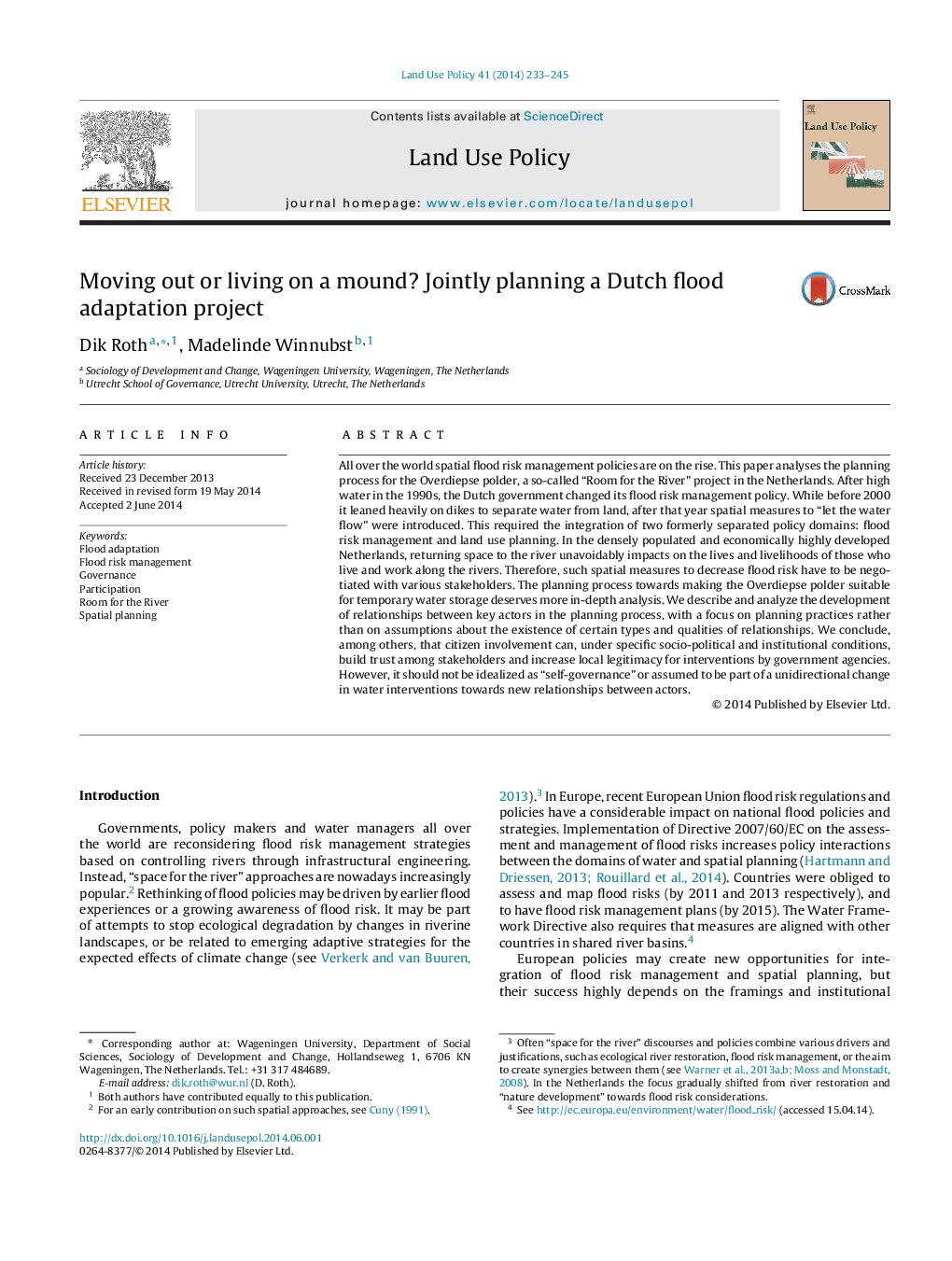| Article ID | Journal | Published Year | Pages | File Type |
|---|---|---|---|---|
| 6548518 | Land Use Policy | 2014 | 13 Pages |
Abstract
All over the world spatial flood risk management policies are on the rise. This paper analyses the planning process for the Overdiepse polder, a so-called “Room for the River” project in the Netherlands. After high water in the 1990s, the Dutch government changed its flood risk management policy. While before 2000 it leaned heavily on dikes to separate water from land, after that year spatial measures to “let the water flow” were introduced. This required the integration of two formerly separated policy domains: flood risk management and land use planning. In the densely populated and economically highly developed Netherlands, returning space to the river unavoidably impacts on the lives and livelihoods of those who live and work along the rivers. Therefore, such spatial measures to decrease flood risk have to be negotiated with various stakeholders. The planning process towards making the Overdiepse polder suitable for temporary water storage deserves more in-depth analysis. We describe and analyze the development of relationships between key actors in the planning process, with a focus on planning practices rather than on assumptions about the existence of certain types and qualities of relationships. We conclude, among others, that citizen involvement can, under specific socio-political and institutional conditions, build trust among stakeholders and increase local legitimacy for interventions by government agencies. However, it should not be idealized as “self-governance” or assumed to be part of a unidirectional change in water interventions towards new relationships between actors.
Related Topics
Life Sciences
Agricultural and Biological Sciences
Forestry
Authors
Dik Roth, Madelinde Winnubst,
